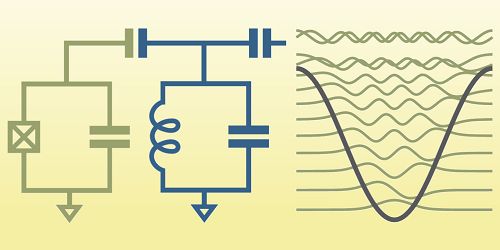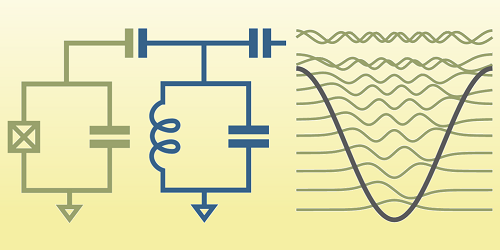Qubit Readout Mystery Solved
Quantum computers that use superconducting quantum bits (qubits) offer high efficiency and scalability. But their operation is limited by the fact that the readout of their qubits is more error prone than predicted by theory. This poor performance has been unexplained for two decades, despite many attempts to understand it. Now Marie Frédérique Dumas and her colleagues at the University of Sherbrooke, Canada, have developed a theoretical framework that solves this mystery [1]. The researchers hope that their framework will enable superconducting quantum computers to perform calculations more accurately and without needing as many error-correction measures.
Dumas and her colleagues focused on the most widely used type of superconducting qubit: the transmon. A transmon qubit is typically read out by sending a microwave signal through a resonator coupled to the qubit. The properties of the outgoing signal depend on the qubit’s quantum state. The researchers studied this qubit–resonator system using three complementary models, ranging from a fully quantum description to an entirely classical one in which the transmon qubit has the dynamics of a driven pendulum.
The team showed that the transmission of the microwave signal through the resonator could cause the coupled qubit to be excited to a high energy level, potentially escaping its confining potential well. This process causes the qubit to become “ionized,” losing its well-defined quantum state. The three models’ predictions of the conditions under which this ionization occurs agreed with each other and with experimental data. In addition to explaining the lower-than-expected readout accuracy for transmon qubits, Dumas and her colleagues say that their framework could be used to better understand systems involving other types of superconducting qubits and other readout schemes.
–Ryan Wilkinson
Ryan Wilkinson is a Corresponding Editor for Physics Magazine based in Durham, UK.
References
- M. F. Dumas et al., “Measurement-induced transmon ionization,” Phys. Rev. X 14, 041023 (2024).





